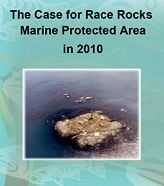This is a draft version, The DFO version in PDF form is here: 2010-03-24
RECORD OF MEETING
Date: March 24, 2010
Location: Pearson College, Sooke, (Ed note:actually Metchosin,) British Columbia
Purpose of Meeting:
Meeting #3 of the Race Rocks Public Advisory Board
Group/Advisory Committee:
Race Rocks Public Advisory Board
Attendees:
Doug Biffard, BC Ministry of Environment
Chris Blondeau, Pearson College
Cathy Booler, Georgia Strait Alliance
Chris Bos, Sports Fish Advisory Board
Kevin Conley, Fisheries & Oceans Canada
Jim Cosgrove – Observer
James Dale, Wildlife Viewing Community
Mike Fenger, Friends of Ecological Reserves
Garry Fletcher, Race Rocks Ecological Warden
Duane Freeman, Department of Natural Defence
Gabrielle Kosmider, Fisheries & Oceans Canada
Dan Kukat, Wildlife Viewing Community
Kate Ladell, Fisheries & Oceans Canada
Angus Matthews, Shaw Ocean Discovery Centre
Ryan Murphy, Pearson College
Aaron Reith, First Nations Liaison
Richard Taggart, Sports Fish Advisory Board
Facilitator:
Donald Golob – Delaney and Associates Inc.
Meeting Goal:
To provide Race Rocks Public Advisory Board (the Board) members with an update on the designation process and receive feedback on next steps.
Objectives:
To provide an overview of the MPA designation process.
To review the status of the various documents and instruments and receive Board feedback.
To plan activities of the Board over the next 6-8 months
Materials Distributed:
Meeting Agenda
November 26, 2009 RRPAB Meeting #2 Minutes
Stakeholder Values Input Document
Addendum to Stakeholder Values Input Document
Fisheries & Oceans Canada Power Point Presentation
Key Issues Discussed:
1. Welcome
Introduction and Welcome by Kate Ladell.
An acknowledgement was made to the meeting taking place on the traditional lands of the T’Sou-ke Nation, Songhees Nation and Beecher Bay First Nation.
Appreciation was expressed to Pearson College for providing the meeting venue.
The role of the facilitators in preparing the agenda, with input from Fisheries & Oceans Canada and Board members, and facilitating the meeting was outlined.
2. Introductions
Round table introductions.
3. Meeting #3 Agenda
a. Review
The attendees reviewed the agenda with the facilitator’s guidance.
b. Discuss /Amend /Approve
Kate Ladell offered a point of clarification for agenda item 5 – “Structure and Status of OAR” should be a sub-bullet to the broader “Review of Progress to Date” presentation.
A question was raised over what to do if a new item that was suggested but not added to the meeting agenda, specifically an explanation of the business case / plan that DFO brings to Marine Protected Areas, specifically Race Rocks.
Kate Ladell offered a response that the business case / plan is set out through a Conservation Objective, which would be covered later in the meeting.
Kate Ladell responded we would not be having a specific discussion on the business case today, as the agenda was set based on feedback from a number of board members. However, this discussion could take place at a meeting outside of this board meeting, or be placed on a list of agenda items for the next meeting.
This item was flagged as an “outstanding item” for later consideration.
Action Item: 10-03-01 – DFO to include a business case / plan outline on the agenda of the next meeting.
A new agenda item was suggested by a board member(ed note: Garry Fletcher) to deliver a presentation he had prepared on the finances and accountability of the Marine Protected Area process.
Kate Ladell responded that when this topic was brought up at the last meeting, the board had suggested that it did not fall within the mandate of the Terms of Reference, thus it was not placed on the agenda based on previous input from the board. Another board member expressed that there should be room to include this on the agenda. This item was flagged as an “outstanding item” for consideration at the end of the meeting if time permitted, alternatively at the next meeting.
A request was made for an update on the status of the TOR
Kevin Conley informed the board this would be covered later in the agenda.
Meeting #2 Minutes
Review
The board was asked to review the minutes for any amendments
Discuss/Amend /Approve
Gabrielle Kosmider proposed the following:
Minutes – Correction to Minutes: change “Jacques Martin to Jacques Mark”.
Suggested Addition to Minutes (by a Board member): “It was suggested that designation could not proceed without a prior commitment from DFO regarding future financial and regulatory support for a MPA at Race Rocks in partnership with BC Parks, First Nations and Pearson College. No group discussion took place around this statement.”.
DFO’s response to the above addition to the minutes to be reflected in the March 24, 2010 minutes:
DFO Response: We acknowledge the concerns about having adequate funding and resources upon designation. Once designation is achieved and a management plan has been developed, identification of appropriate resources will be an important next step.
The facilitator reviewed meeting etiquette and a reminder to treat people with respect, to let people finish talking and to deal with issues calmly, as there is a lot of passion surrounding the topic of Race Rocks.
No other additions or amendments were offered.
Action Items were reviewed. Outstanding Action Items will be carried over and addressed before the next meeting, and are reflected in the Action Log.
Review of Progress to Date
Presentation – Review of Progress to Date
Kevin Conley presented.
Kevin Conley addressed concerns over designation timelines. Timelines initially expressed were the intent. A number of challenges were encountered. DFO has developed a project management plan for Race Rocks which has resulted in more realistic timelines. There is no intention to delay designation.
Kevin Conley explained the purposed of the “Triage Questionnaire”, which is a document to be completed by DFO, based on Advisory Board input, to inform what concerns exist.
The TOR has been brought forward internally in DFO for approval.
Action Item: 10-03-02 – TOR to be circulated to Advisory Board and posted on the Consultation Secretariat webpage upon approval.
A board member expressed some concern that the boundaries presented and those agreed upon by the Board might not be the same.
Upon seeing a slide of the boundary, another board member commented that the image on screen was correct, and that there was agreement on this boundary from the last meeting.
Action Item: 10-03-03 – Kevin Conley to send out a map that shows only the proposed MPA boundary for confirmation.
A board member requested clarification on frequency and total number of board meetings to occur.
Initially (when March 31, 2010 was intended to be the completion of the Board’s role), there were to be 4 meetings. Now there is a date of March 31, 2011 for completion of the Board’s role and the TOR indicates bi-monthly meetings, which is a large time commitment.
Recommendation from the Board: For the Board to meet as needed, versus bi-monthly.
Action Item: 10-03-04 – DFO is to provide updates via email the Board on a timely basis, so that they can report to constituents.
A discussion took place on the tenure of the Board. The commitment of the Board to be in place until the designation is complete shows the commitment of the people here to the process.
Kate Ladell clarified that at the end of the process, this Board will be disbanded and a new Board will be formed to provide management advice. Members of the pre-designation board will be invited to attend if they are interested.
An interest in carrying on with the process was expressed by some Board members.
A Board member inquired if there would be another chance to view the TOR
It is DFO’s understanding that the TOR was discussed at the November 2009 meeting, and agreed upon.
Another Board member expressed that the Board had not seen the final version.
A Board member expressed a desire to see a “wiring diagram” to see how the Advisory Board and First Nations consultation processes take place in relation to each other and how they are connected, including clarification of flow of information and how decisions are made.
Action Item: 10-03-05 – DFO to add as an agenda item providing an explanation and clarification of the First Nations and Advisory Board Processes, including how they are linked (where advice goes and reporting back).
A Board member inquired as to whether Racerocks.com could be used to post minutes and other documents relating to the current designation process. The point was made that it would be convenient for users and allow for continuity due to the documentation of past processes on Racerocks.com.
Kate Ladell indicated that the DFO Consultation Secretariat is effective at getting final documents posted and that another option would be to include documents from Racerocks.com on the DFO website as well.
Action Item: 10-03-06 – Kate Ladell to confirm with DFO Communications whether posting Race Rocks DFO documents to Racerocks.com is possible.
The facilitator inquired as to how the Board felt about information has been presented so far in meeting
Overall response good.
Kevin Conley presented an outline of the Overview and Assessment Report
The Values Input table has been valuable for filling in gaps
There were some comments on the Draft Socio-economic and Cultural Overview and Assessment (SECOA) from the last meeting.
DFO needs to consult the Board to ensure the correct contacts are made to finish the Socio-economic component.
For the Cultural component:
DFO will be working on the First Nations component this fiscal year.
The Values Input document will inform the other cultural and historical aspects.
Recommendation of the Board: The Socio-economic component is not sufficient and is flagged as needing some work. DFO to draw expertise from Board and provide funding to complete socio-economic component.
There is lots of expertise around the table
Could we draw on expertise around the table and provide funding for someone to complete the socio-economic component?
Action item: 10-03-07 – Board members to prepare a recommendation to state this.
A Board member raised a question regarding where the Wright and Pringle document fits into Overview and Assessment process.
Kevin Conley explained that this Overview and Assessment is an update to the Wright and Pringle document (e.g. Rockfish Conservation, Species at Risk Act)
The process of the overview, regulatory processes, etc. have changed in the meantime.
Board members expressed concern with gaps in research:
Will there be a fisheries study?
Will there be an invertebrate study?
Action item: 10-03-08 – Board members to prepare a recommendation that gaps be identified and prioritized and a commitment be made to research.
A board member recommended that historical aspects be added to the SECOA to capture the interesting history.
150 years since tower was erected
Navy’s anniversary
Approach and status of First Nations consultation
Kevin Conley/Aaron Reith presented.
Aaron Reith recognizes the efforts of Gordon Curry, Glen Rasmussen and Kevin Conley in relationship building.
The MOU that is being developed must be signed and accepted by both parties. It involves DFO and the T’Sou-ke Nation, Songhees Nation and Beecher Bay First Nation.
The proposed MOU was submitted to DFO on January 4, 2010 and on March 18, 2010 DFO provided recommendations to First Nations.
In April 2010 there will be a face to face meeting between DFO and the three First Nations regarding the MOU.
Esquimalt FN is not involved in the MOU:
Kevin Conley is trying to arrange a meeting.
He has notified DFO’s Aboriginal Affairs staff for assistance in engaging Esquimalt FN.
Aaron Reith indicated that T’Sou-ke Nation, Songhees Nation and Beecher Bay First Nation have indicated they want to be engaged in this manner:
It has yet to be determined how Esquimalt FN would like to be engaged.
A board member recalled that the best meeting they have had with First Nations took place on Race Rocks.
Pearson College welcomed everybody to another meeting on Race Rocks.
Aaron Reith appreciates the comments and will bring them forward.
Board members expressed concerns with Esquimalt FN not participating in the MOU.
Kevin Conley explained they have not expressed interest in participating in this manner.
Kate Ladell explained that DFO needs to clarify how engagement has proceeded with Esquimalt FN in the past and needs to do more work to ensure engagement moves forward.
Action Item: 10-03-09 – DFO to review and report on progress with Esquimalt First Nation with respect to consultation.
Board members expressed concerns that this process will lead to similar challenges from the last process:
Concerns that there will be inadequate First Nations involvement – this needs to be addressed.
Kevin Conley expressed that DFO is aware of this and are actively trying to find a venue and find out their interests.
Dan Kukat will be seeing Chief Andy Thomas at a Victoria Harbour Authority meeting on March 25, 2010
Action item: 10-03-10 – Dan will report any information back to the Board.
Overview of the designation process
Presentation – Steps in the regulatory process
Kevin Conley presented.
Race Rocks AOI is currently in the “Overview and Assessment” stage.
This stage involves lots of work, but informs the rest of the process.
The regulatory intent will be taken to the Board for review.
In the previous process, concerns were brought up in the regulatory drafting stage.
Kate Ladell and Kevin Conley outlined the DFO decision making process.
There is a lot of simultaneous communication, reporting and feedback that needs to happen within and between the Region and National Headquarters (Ottawa).
Can make for difficulties in getting information in a timely fashion.
A Board member raised a question of whether management of an MPA goes through a similar process for decision making.
Kate Ladell explained the designation is a regulatory activity that must be approved by the Minister, whereas a Management Plan requires Regional Director General approval with Assistant Deputy Minister concurrence.
Once the MPA is into management phase, it becomes an operational responsibility; South Coast Area will be responsible and it will be managed by the Nanaimo Oceans staff.
A Board member questioned what would happen if the Advisory Board did not see any value in a MPA and recommended against it.
Kate Ladell suggested DFO would reassess based on the Advisory Board recommendation and other interests such as First Nations.
A Board member expressed that he was still waiting to be convinced that there was value added by this process:
Part of the advisory role is to comment on how much money is being spent on this and he feels that it is too much
He still feels like he is back at the MPA “yes” or “no” stage
He feels that Parks Canada’s National Marine Conservation Area designation would provide much better protection
He is speaking on behalf of his constituents
Another board member supported this view and also questioned what the added value was:
He feels that money could be better spent on what we already know is protecting and is working
Is there a paper on why we are pursuing this?
Action Item: 10-03-11 – DFO will research the steps and rationale leading to the previous decision to pursue MPA designation.
A Board member offered that proximity was one reason
To showcase what an MPA could do
Provide a regulatory mechanism for protection
Doug Biffard explained that the province put Race Rocks forward as a 1998 effort to develop a joint MPA strategy
The provincial designation is not strong enough to meet the objectives of the Ecological Reserve
Looking for improvements on conservation measures (e.g. marine navigation (wake, anchors), impacts on birds)
Fisheries closures have to be renewed annually
This could be passed over with an error of a Fishery Manager or changes within DFO, without consultation with the province
Kate Ladell explained that DFO’s approach to establishing MPA’s has changed since 2001
Now looking at strategic networks of MPAs; have been criticized for taking a “one-off” approach in the past.
Race Rocks could be perceived as falling into this one-off category, However, it needs to be considered in the context of a network: Currently we only have 2 Oceans Act MPAs – Endeabour Hydrothermal Vents and Bowie Seamount, both of which are far offshore. The other proposed Area of Interest is the Hecate Strait Glass Sponge Reefs – also offshore and very deep. Race Rocks would be the only coastal protected area, thus providing a significant ecological value-added to the Pacific Region MPA network.
Doug Biffard disagrees with the “one off” description:
Race Rocks was one of 100+ areas recommended for raising the level of conservation protection across coast
Race Rocks was to be the first, the next step was to do ~20 at a time.
Kate clarified that she did not think Race Rocks was a “one off”.
There are four clear objectives for Race Rocks in the Oceans Act
Kevin Conley stated that organisms in the water column are not necessarily conserved comprehensively by fisheries closures.
A Board member expressed that for 30 years someone from Race Rocks has been approaching everyone taking something out of the water
This has been working fine
We are putting forward a regulatory basis for what is already being done
Action Item: 10-03-12 – DFO to send out a web link for the Oceans Act.
A Board member questioned what regulations will be put into place when designation happens
Board discussions, such as Compatible and Incompatible Activities will inform these
A Board member expressed concern at Pearson College ability to continue to fund the Ecoguardian and Race Rocks
Worried about short term sustainability, let alone long term.
Don’t want to end up with a MPA with no funding associated with it
This was supported by another Board member
Frustration with how long the process is taking, resources given to the process of designation and concerns about sustainability were expressed.
MPA vision and conservation objectives
Review of current status
Presentation by Kate Ladell
The core of the MPA is the Conservation Objective
COs for some Oceans Act MPAs have been criticized as being too vague
Presentation of a very high level, very draft first order Conservation Objective
Has not gone through any internal process
Derived from input from Board, examples from other MPA’s
Wanted something meaningful for Race Rocks
Looked at reoccurring themes from the Values Input document, Ran a word frequency analysis. The result is very draft and will likely change
Trying to get a first order conservation objective to get at broad conservation values, but with a level of specificity to get at measurable values.
Comments and observations
A Board member asked whether education, awareness and public values could be part of a conservation objection, or is it only biological?
In this case, almost an urban MPA (high webpage traffic, ecoeducation, marina, sportsfishing)
DFO is urged to look at people impacts, not only biology
Kate Ladell mentioned we need to remember what the mandate of the Department is when crafting a CO for an Oceans Act MPA:
Does not include education and outreach
A Board member expressed that the Conservation Objective’s first statement sounded very negative
Why not just put a fence around it to prevent from human modification?
Would like to see protecting the Race Rocks marine ecosystem by education and promoting responsible use
A Board member expressed concern that research would not be allowed
This area should be used as a natural benchmark
We are trying to get towards sustainability
We need benchmarks to understand ecological sustainability
Action Item: 10-03-13 – DFO to put out Draft Vision and First Order Conservation Objective as a working document
Action Item: 10-03-14 – DFO to review the 2000 Proposal document to consider the conservation objective documented there in updating the vision and conservation objective.
Action Item: 10-03-15 – DFO to check with Rebecca Reid, Regional Director, Oceans, Habitat and Enhancement, on the addition of the “human” component to the CO; does this fit with the mandate?
Next steps for the Board
Aspects requiring Board input
Kevin Conley delivered a presentation
Discussion / preferred timeline
An individual board member reminded DFO of a previous Board recommendation that the management plan be revisited from the last process to see what the Board can draw from it, including Pearson College Management for the last 12-13 years
A Board member expressed a need to see how First Nations will fit into the management plan
Kevin Conley explained that there is text in the Agreement that speaks to integration with the Board
This suggests agreement both with First Nations and the Department that this is where we want to be heading
A Board member suggested extending the meeting because he feels that DFO need to be clear about explaining the value added, that it keeps being glossed over, and that DFO needs to understand this is a priority
This item was not on the original agenda and adequate time for a complete discussion was not available..
There was an inability to extend the meeting as requested as members had to leave due to prearranged travel reservations.
The option was provided to those who wanted to stay later to see the presentation.
Recommendation: DFO provide a presentation on why this MPA is a positive benefit
A Board Member offered that anyone interested in seeing a report that he prepared on DFO expenditures, please stay after the meeting
He had hoped it would be discussed today, but we ran out of time and he feels that it keeps getting dropped as an agenda item
Another Board member suggested that the Board put this as a presentation for the next meeting.
The option was provided to those who wanted to stay later to see the presentation.
Action Item: 10-03-16 – DFO include presentation by Garry Fletcher of expenditures on Race Rocks on the agenda next meeting.
Adjournment
Action Items:
| Log Number |
Responsible |
Action |
Status |
| 09-11-01 |
DFO |
Investigate lower than 300m flights over Race Rocks as part of the DFO creel survey. (carried over) |
|
| 09-11-02 |
DFO |
Ask for federal agency input to the table |
|
| 09-11-03 |
Veronica Lo |
Consult with other ENGOs and resubmit ENGO input (carried over) |
|
| 09-11-04 |
RRPAB |
Review completed Values Input document prior to next meeting (carried over) |
|
| 09-11-05 |
RRPAB |
Finalize Values Input document at next meeting (carried over) |
|
| 09-11-06 |
DFO |
Once RRPAB approved Values Input document, circulate to RRPAB members to distribute, as appropriate. (carried over) |
|
| 09-11-07 |
DFO |
Follow up on non-sectoral activity entries (carried over) |
|
| 10-03-01 |
DFO |
DFO to include a business case / plan outline on the agenda of the next meeting. |
|
| 10-03-02 |
DFO |
TOR to be circulated to Advisory Board and posted on the Consultation Secretariat webpage upon approval. |
|
| 10-03-03 |
DFO |
Kevin Conley to send out a map that shows only the proposed MPA boundary for confirmation. |
|
| 10-03-04 |
DFO |
DFO is to provide updates the Board on a timely basis, so that they can report to constituents. |
|
| 10-03-05 |
DFO |
DFO to add as an agenda item providing an explanation and clarification of the First Nations and Advisory Board Processes, including how they are linked (where advice goes and reporting back). |
|
| 10-03-06 |
DFO |
Kate Ladell to confirm with DFO Communications whether posting Race Rocks DFO documents to Racerocks.com is possible. |
|
| 10-03-07 |
RRPAB |
Board members to prepare a recommendation to state this (w.r.t to Socio-Economic Report) |
|
| 10-03-08 |
RRPAB |
Board members to prepare a recommendation that gaps be identified and prioritized and a commitment be made to research |
|
| 10-03-09 |
DFO |
DFO to review and report on progress with Esquimalt First Nation with respect to consultation. |
|
| 10-03-10 |
Dan Kukat |
Dan will report any information back to the Board (w.r.t. conversation with Chief Andy Thomas) |
|
| 10-03-11 |
DFO |
DFO will research the steps and rationale leading to the previous decision to pursue MPA designation. |
|
| 10-03-12 |
DFO |
DFO to send out a web link for the Oceans Act. |
|
| 10-03-13 |
DFO |
DFO to put out Draft Vision and First Order Conservation Objective as a working document |
|
| 10-03-14 |
DFO |
DFO to review the 2000 Proposal document to consider the conservation objective documented there in updating the vision and conservation objective. |
|
| 10-03-15 |
DFO |
DFO to check with Rebecca Reid, Regional Director, Oceans, Habitat and Enhancement, on the addition of the “human” component to the CO; does this fit with the mandate? |
|
| 10-03-16 |
DFO |
DFO include presentation by Garry Fletcher of expenditures on Race Rocks on the agenda next meeting. |
|
Recommendations/Decision(s) Made/Deferred:
Recommendation from the Board: For the Board to meet on an “as-needed’ basis, versus bi-monthly
Recommendation from the Board: The socio-economic component of the OAR is not sufficient and is flagged as needing some work. DFO to draw expertise from Board and provide funding to complete socio-economic component. (Board members to provide clarified recommendation)
Recommendation from the Board: DFO provide a presentation on why this MPA is a positive benefit
Contact:
DATE”M/d/yyyy” 4/1/2010 PAGE 11

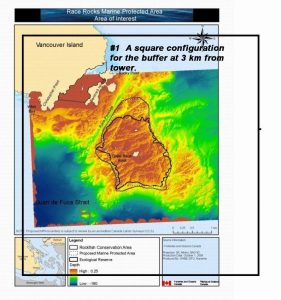
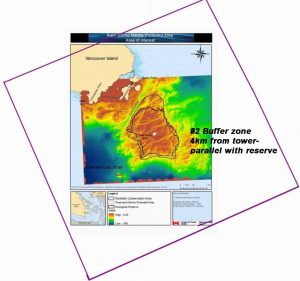
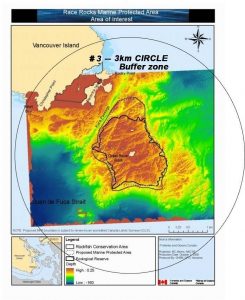
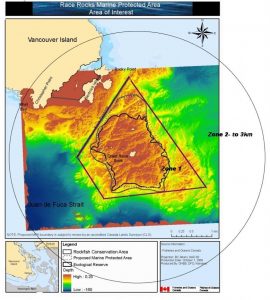
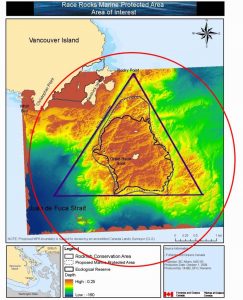
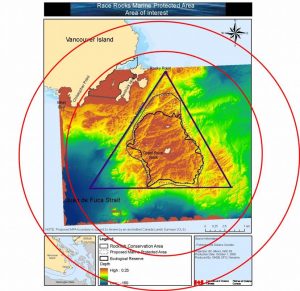
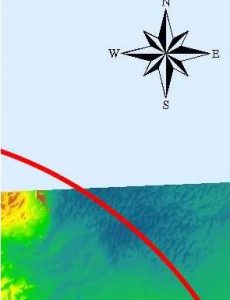
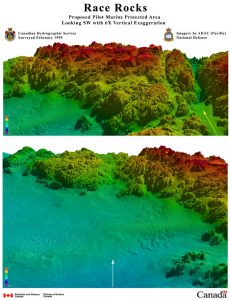
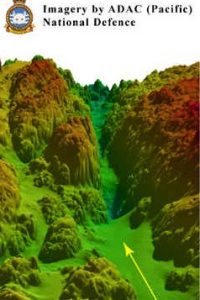
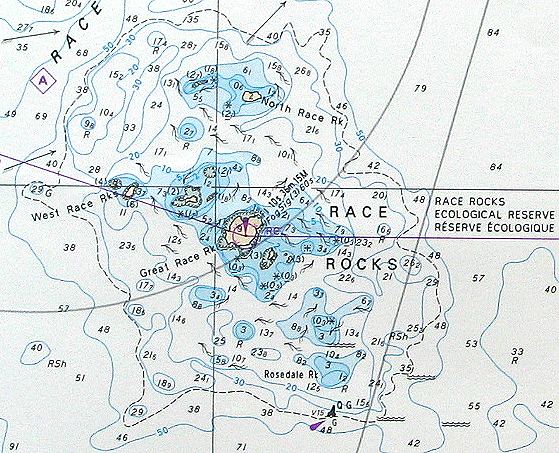
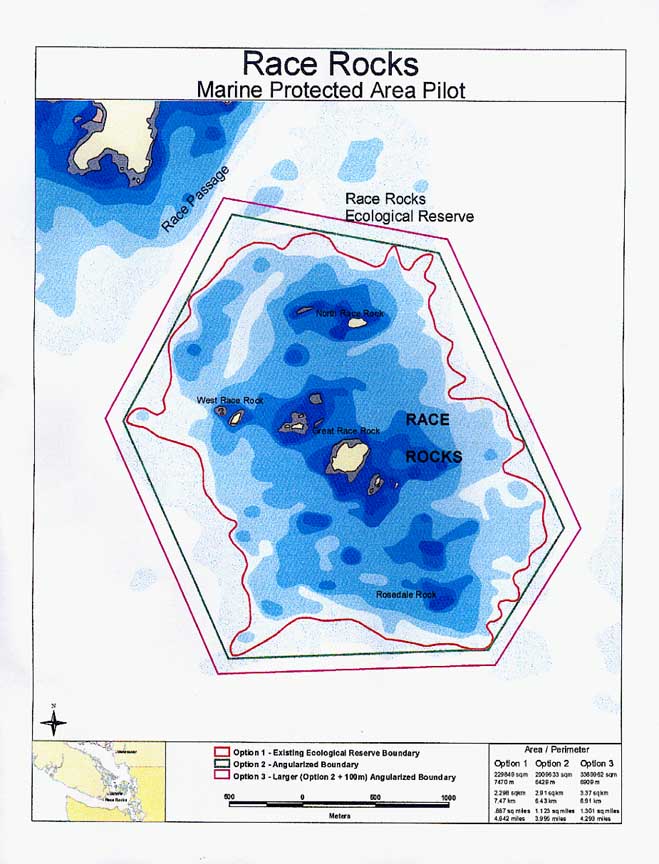
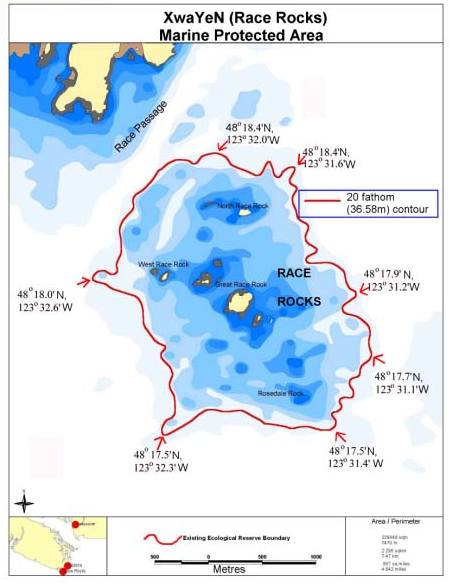
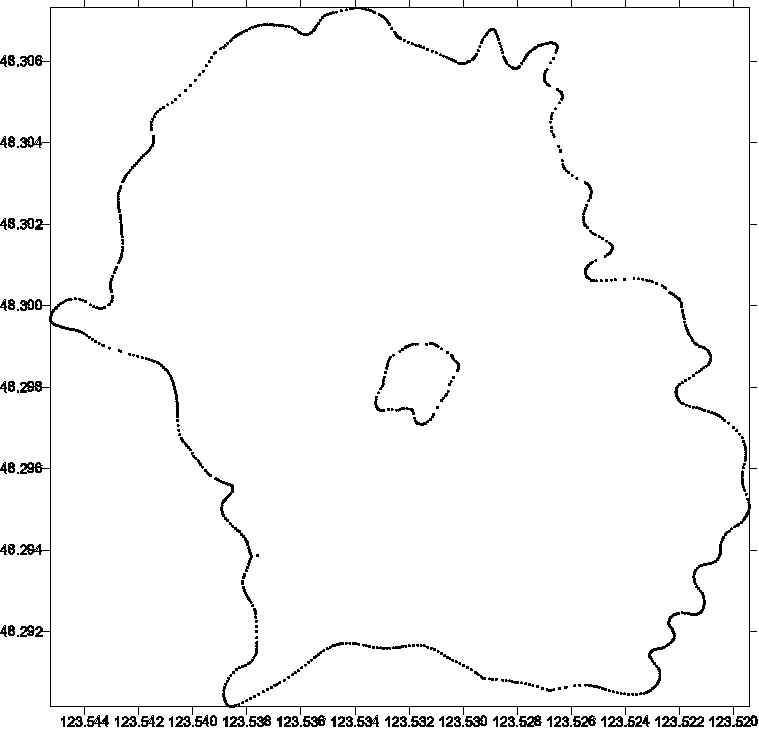
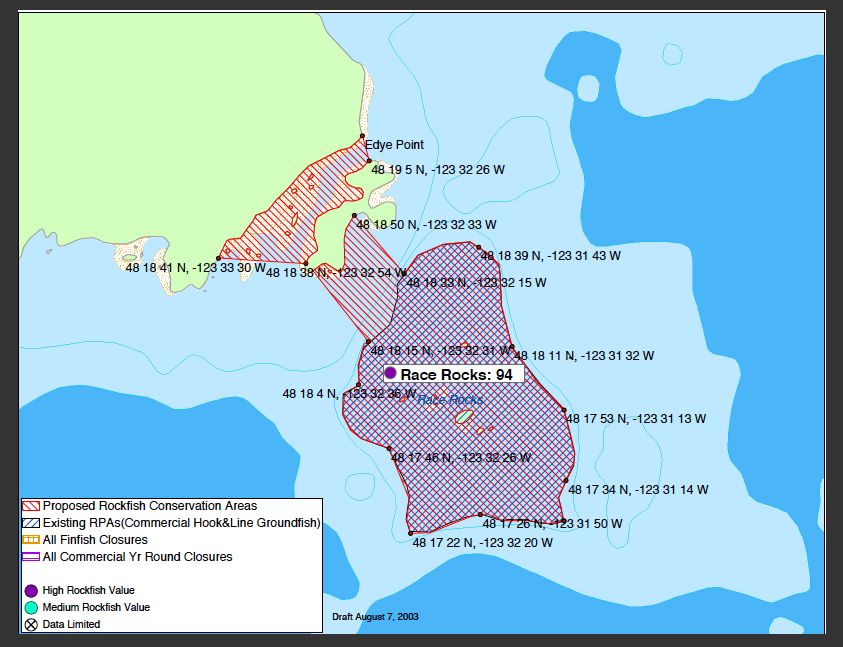
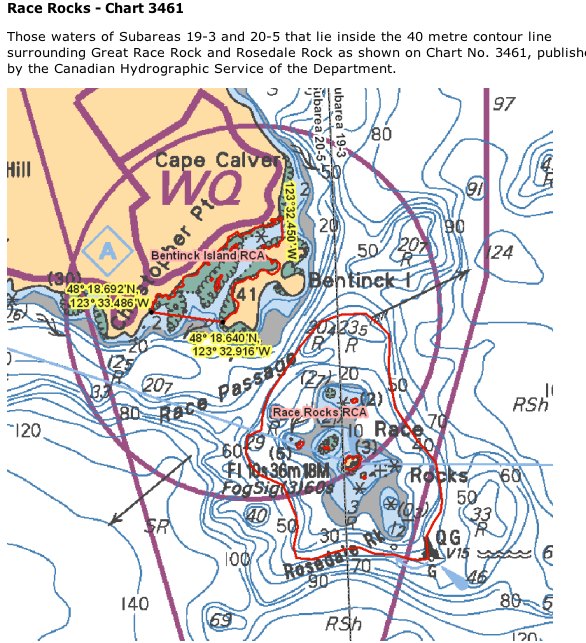
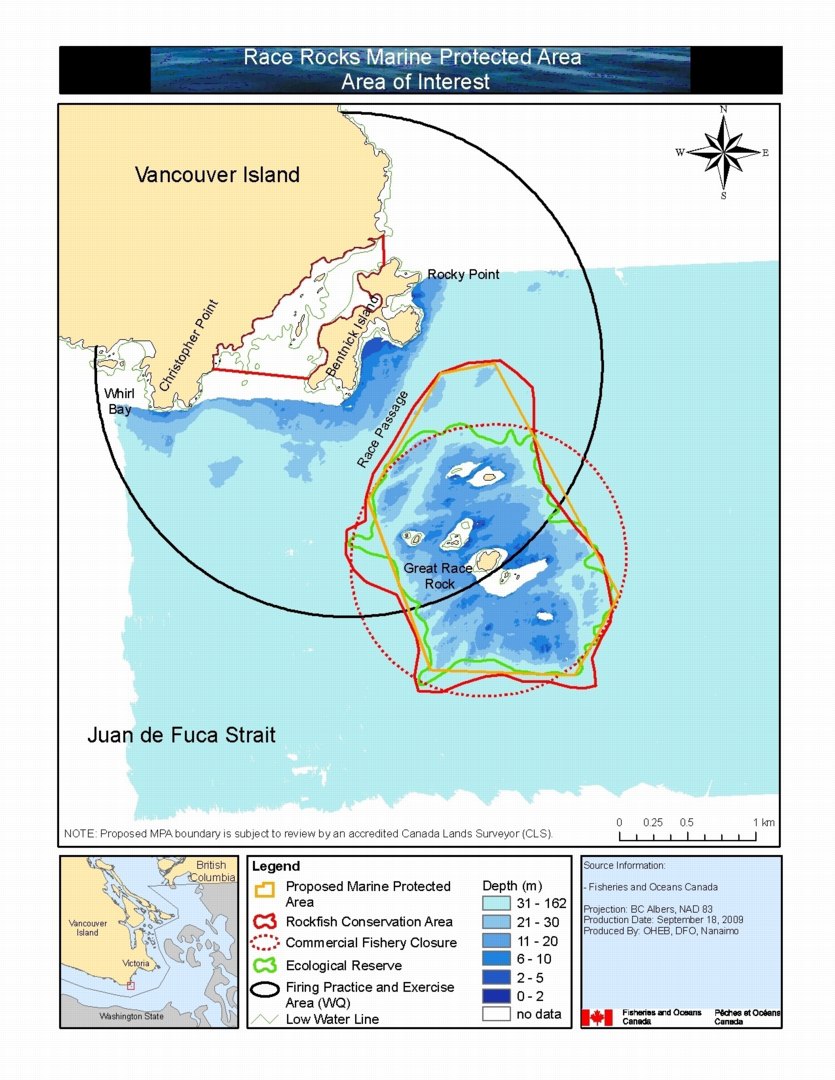
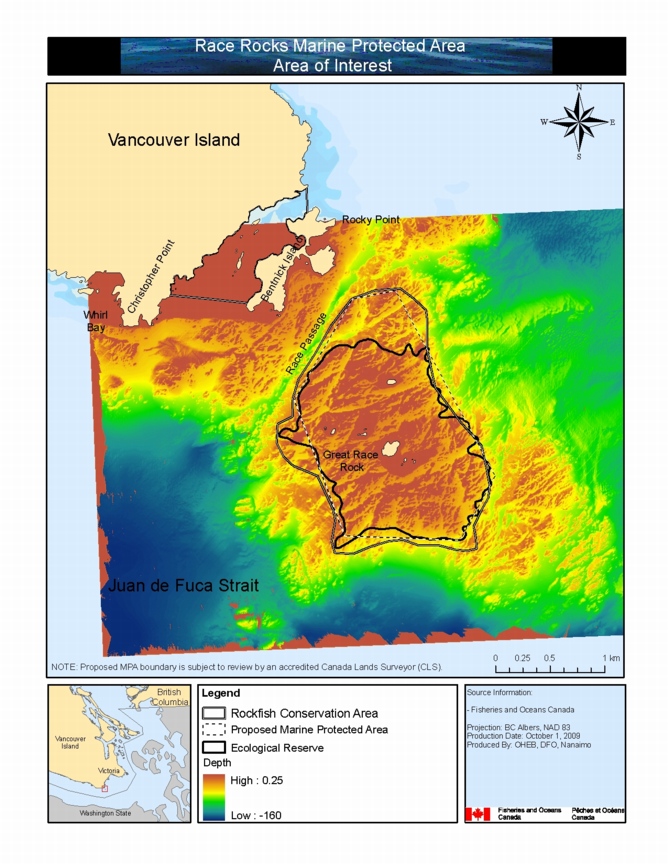
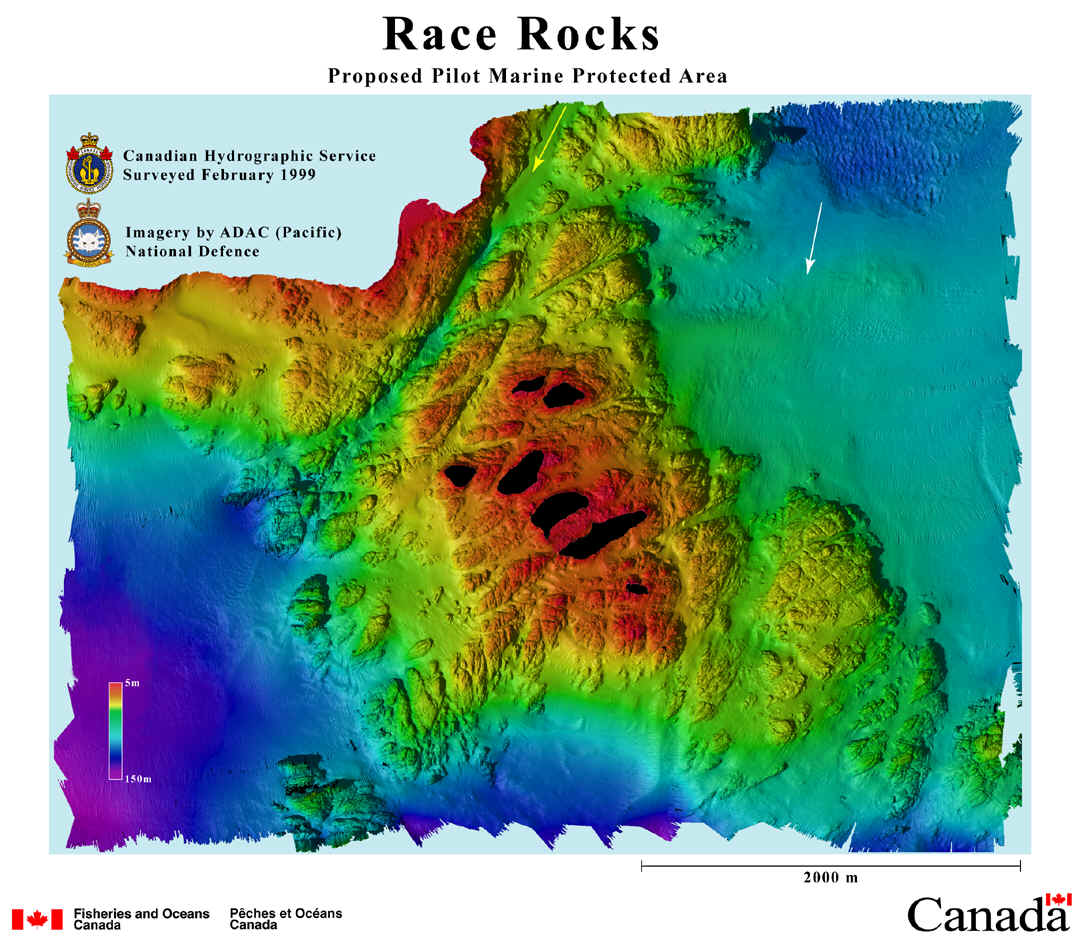

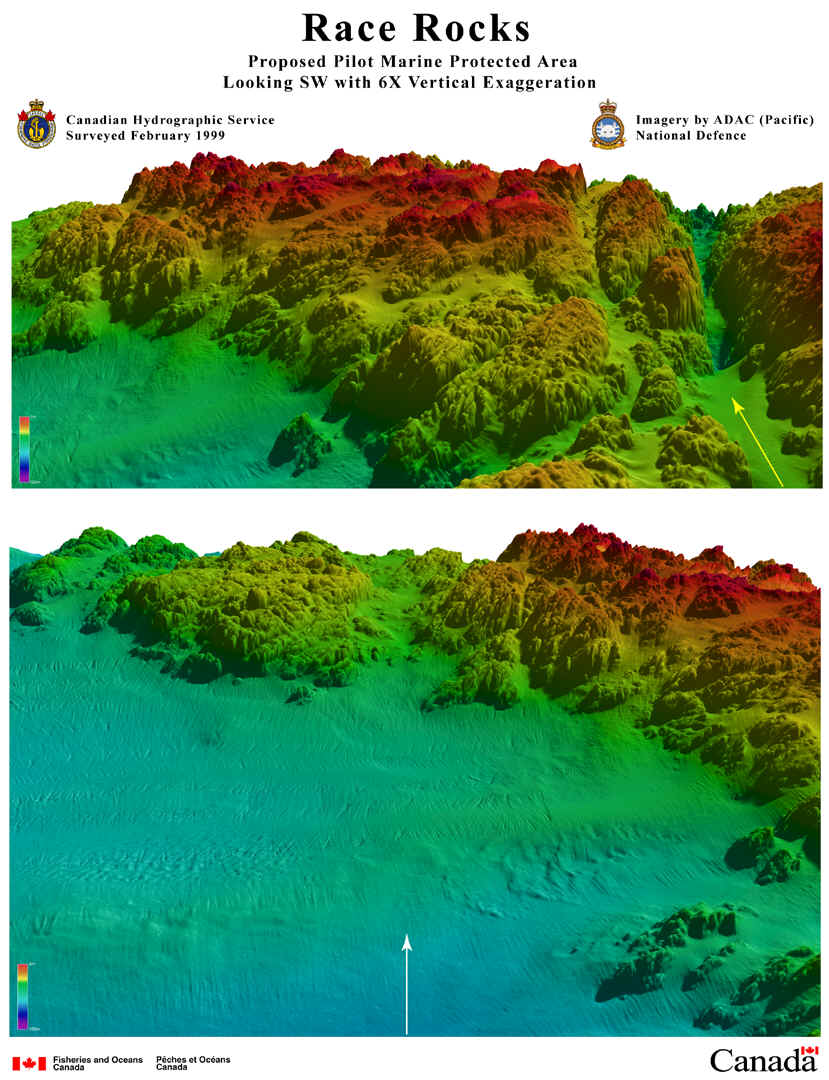
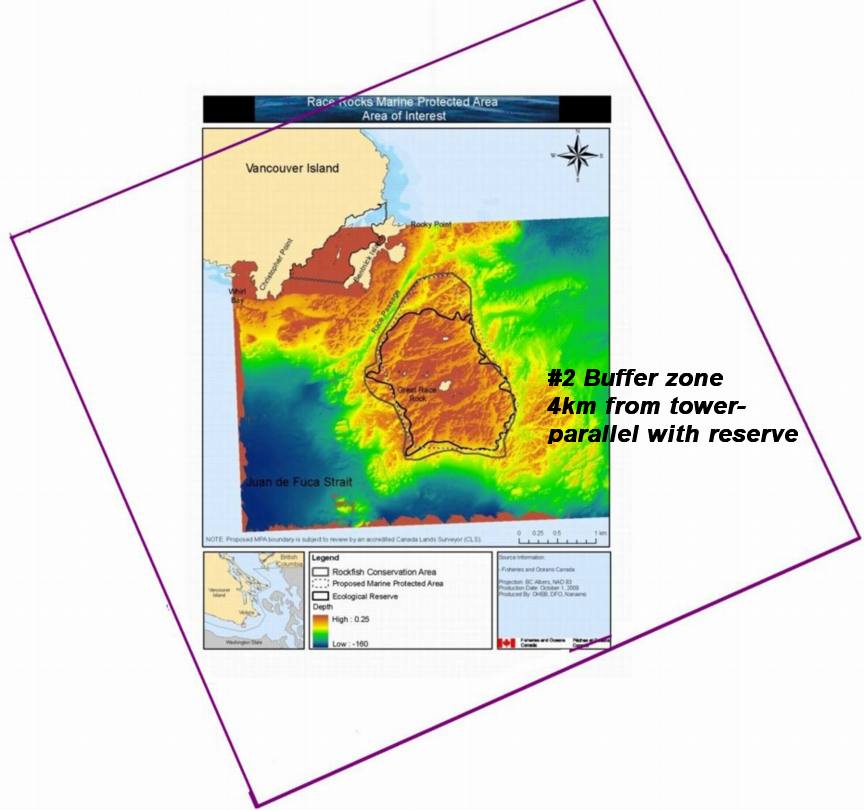
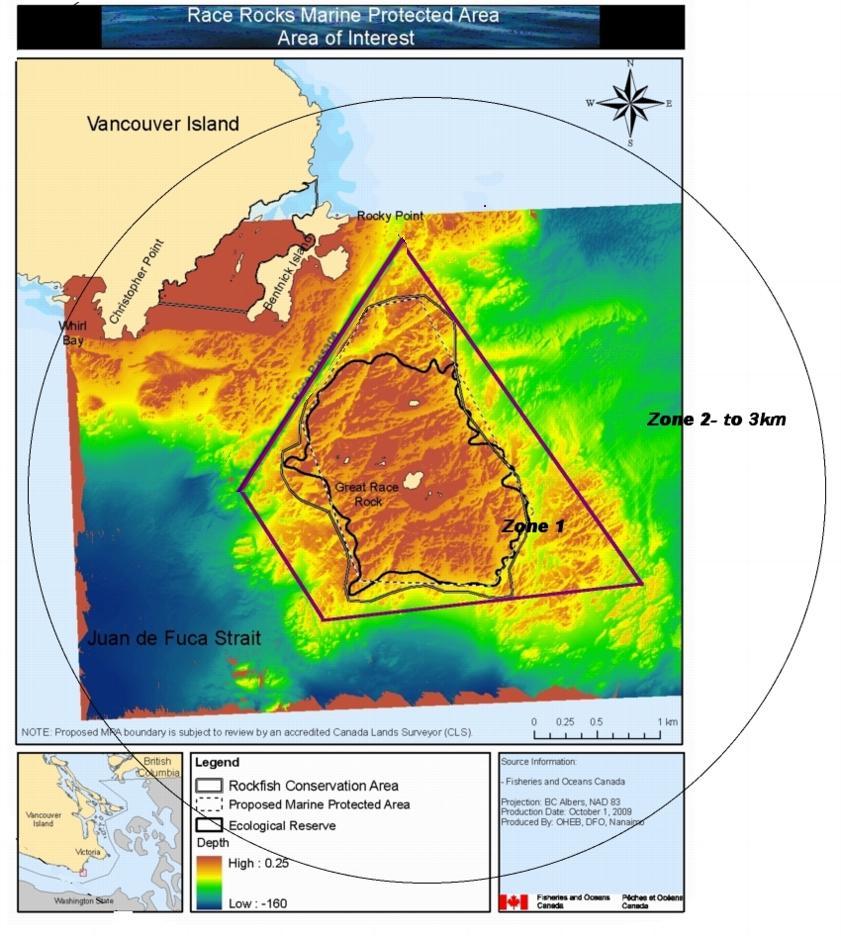
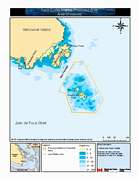 Proposed boundary areas
Proposed boundary areas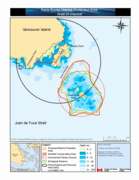 Proposed boundary areas detail
Proposed boundary areas detail